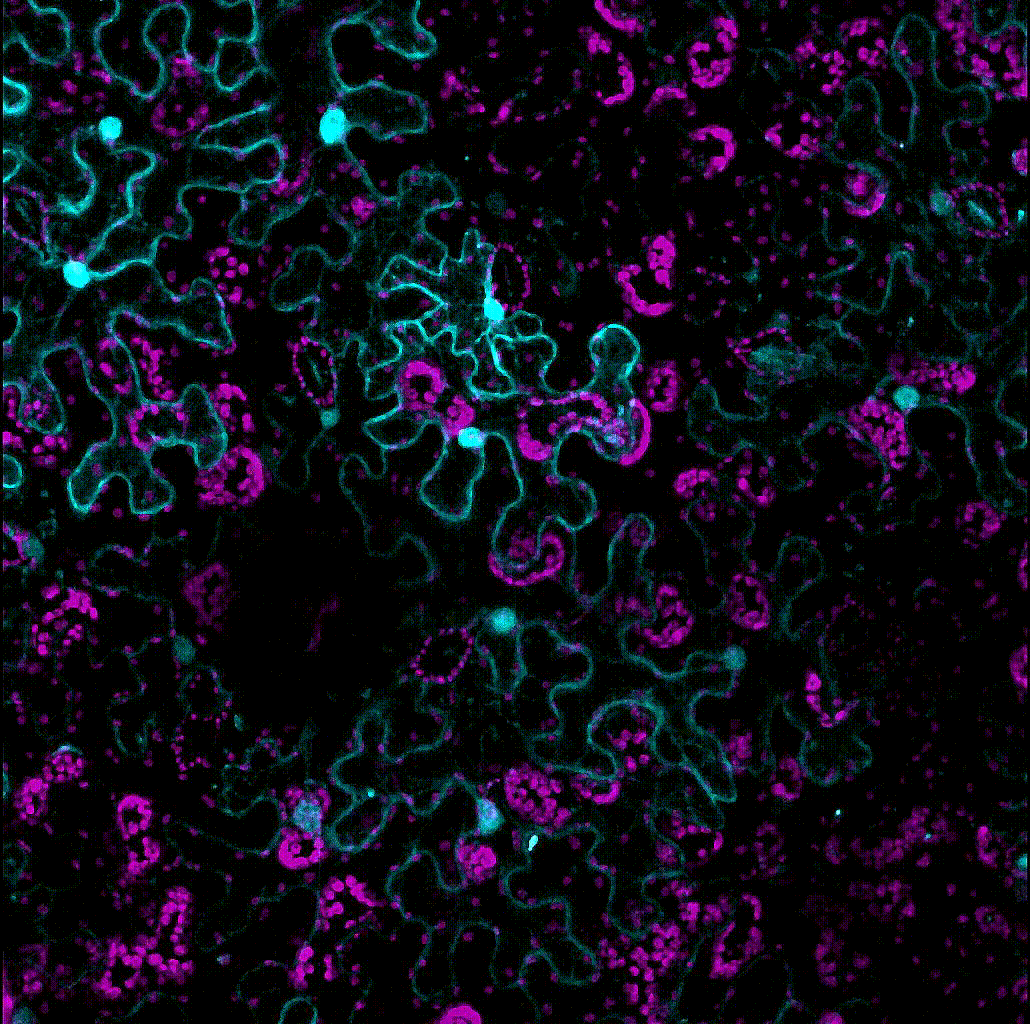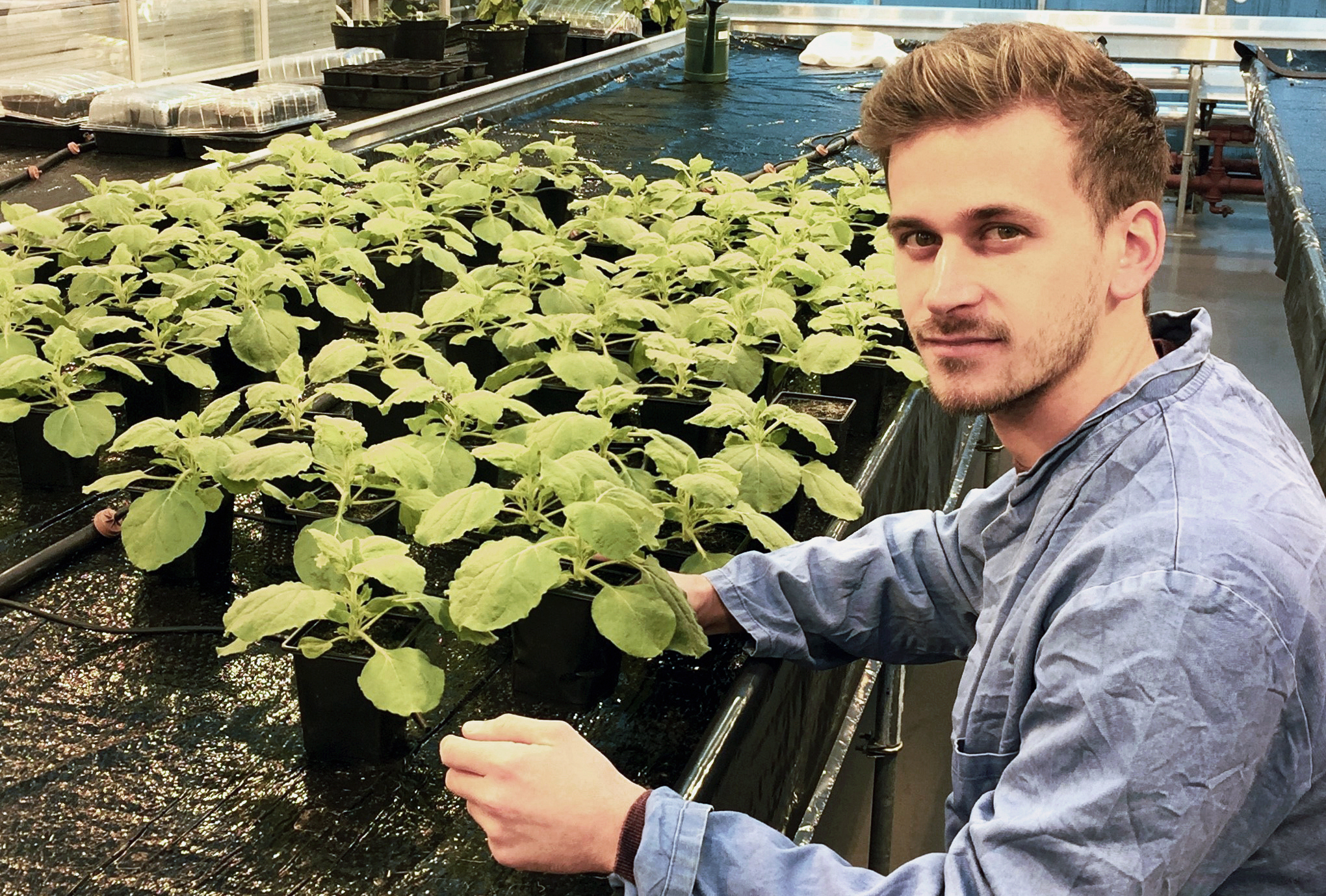An interdisciplinary collaboration between structural biologists and plant scientists has revealed another layer in the signalling pathway of strigolactone – a plant hormone that plays a key role in shoot branching and other plant development processes.
Published in Nature this week, researchers from the University of Washington and Sainsbury Laboratory Cambridge University (SLCU), revealed how a section of one particular protein (D3/MAX2) affects how strigolactone is detected in plants.

Fabrizio Ticchiarelli showed that the D3/MAX2 domain plays a specific role in the perception of strigolactone by analysing proteins accumulating in the nucleus of leaf epidermis cells in tobacco.
Assistant Professor Nitzan Shabek (now at UC Davis), together with University of Washington colleagues produced crystals of the proteins involved in the perception of strigolactone. Using x-ray crystallography, they showed that the three-dimensional conformation of one of the components of the proteins could change based on which components of the receptor complex were present, and in response to this structural plasticity, how the perception of the hormone and its metabolism could be regulated.
This work focussed on purified proteins (in vitro). To test whether the observed results also occur in plant cells, they called on the plant developmental biology expertise in Professor Ottoline Leyser’s group at SLCU.
|
What is the different between “in vitro” and “in vivo” experiments? in vivo is Latin for "in the living” and indicates that an experiment was done in conditions that precisely mirror those existing in nature, usually within a natural organism or its cells. in vitro is Latin for "in glass" or more commonly referred to as "in a test tube" and indicates that an experiment was done outside of a living organism or living cells. |
 SLCU PhD student and member of Professor Leyer’s group, Fabrizio Ticchiarelli, provided the plant and microscopy expertise to link the findings to what happens at the cellular level in plants using a tobacco species called Nicotiana benthamiana, which is commonly used in plant cell biological research.
SLCU PhD student and member of Professor Leyer’s group, Fabrizio Ticchiarelli, provided the plant and microscopy expertise to link the findings to what happens at the cellular level in plants using a tobacco species called Nicotiana benthamiana, which is commonly used in plant cell biological research.
“We expressed variants of these proteins with or without the domain that Nitzan and colleagues identified in leaf epidermal cells of tobacco to show that indeed this domain is essential to strigolactone perception and the degradation of a downstream target of strigolactone signalling called SMXL7, which is one of the main regulators of shoot branching,” Ticchiarelli said.

“Being able to show that this flexible D3/MAX2 domain plays a specific role in the perception of strigolactone through in vivo experiments confirms that the findings from the test tube occur in the real world. This highlights their importance and links them to plant development. This research helps to clarify further the molecular processes involved in strigolactone sensing and will feed into my current research where I am analysing the mechanistic details of how exactly strigolactone can tune plant shoot branching.”
|
What is strigolactone? Strigolactones are a group of plant hormones that are involved in regulating a number of plant development processes. They help plants to form a beneficial relationship with soil fungi and are also involved in regulating shoot branching. Strigolactones were first identified for the role that they play in stimulating parasitic plants to germinate in the presence of their host. |
Professor Leyser’s Group focuses on understanding the role of plant hormones inplant developmental plasticity, using the regulation of shoot branching as a model. A regulatory hub in shoot branching control is the hormone auxin and its polar transport system, which extends throughout the plant, transporting auxin from shoots to the roots. The group is also looking at how other hormones, like strigolactone, can influence branching by modulating the auxin transport network and the ability of buds to compete for access to it.





